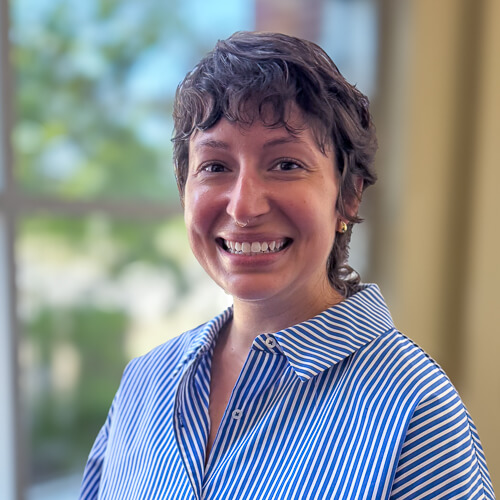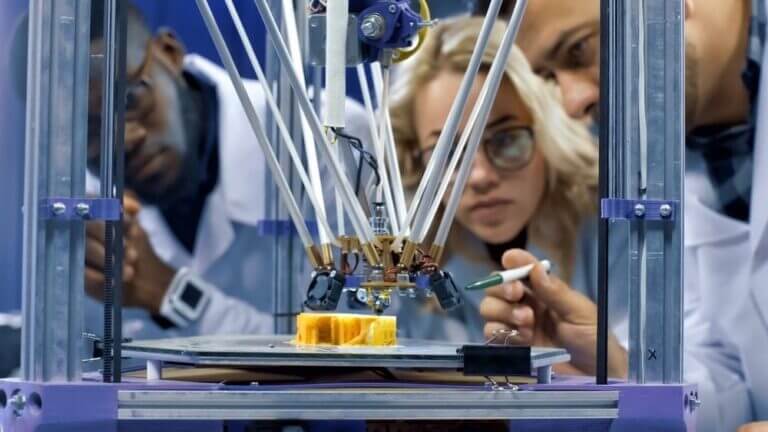As organizations return to hosting in-person events, how do we acknowledge and design around the challenges communities have faced in recent years while inspiring more people of all ages to pursue high-quality occupations in in-demand fields?
To address that question, the EdSystems team recently worked together with three Illinois communities to pilot a health sciences career exploration event that engaged both students and families, as well as the larger community. The intention was to make adults in these communities aware of current entry-level positions with opportunities for advancement while also making students consider the variety of occupations and related educational pathways, particularly those noted in the Illinois Model Programs of Study Guide in Health Sciences and Technology.
Each community brought together a collaboration of at least one high school, community college, and hospital from their region to plan the event. While one of these partners acted as the project lead, kicking off the work and inviting the other partners to the table, it was made clear to all partners from the start that their voices were needed to plan an event that would be engaging for both youth and adults. Throughout the planning and implementation process, each community developed a set of best practices, innovations, and key learnings that they will utilize in future events. Their findings were shared at the I-WIN session: Health Sciences Career Exploration Showcase and are summarized below.
Best Practices
- Community partnerships are key: Maintain regular communication and meeting times during the planning process to keep all partners informed and ensure all perspectives are heard and addressed to the extent possible. A collaboration of education and industry partners also ensures that a diverse background of presenters is available to share their career path stories and represent the community.
- Have a clear timeline and agenda: With all of the partners at the table, there will be many things you want to do in one event. Build consensus and understanding to determine the key activities and how they will play out throughout the day.
- Include follow-up opportunities: Attendees should be provided direct contact information for the educational and hospital partners they are meeting with, along with future events they can attend, including information sessions, job shadows, and networking opportunities.
Innovations
- Rethink your event marketing strategy and know your audience: Fliers and emails don’t cut it. QR codes and social media are helpful for engaging youth while attending events in the community, and speaking directly to groups helps engage adults.
- Allow attendees to choose what they engage in: Provide spaces where attendees can decide who they want to talk to or what activity they want to engage in based on what they want to know more about. Youth at these events expressed how much they enjoyed the freedom to move around the space and have a voice and choice in what they were engaging in at the event. Adults enjoyed connecting directly with human resources and talent acquisition representatives to apply for a job.
- Record and keep your planning notes: Instead of starting from scratch to design experiences, we can be more intentional about keeping a record that includes notes from each planning meeting, agendas, promotional materials used, and debrief notes. Use these to guide your planning process for future similar events. For example, a process for planning an event in one industry area can also be applied to other areas.
Lessons Learned
- Tours are a fan favorite: Attendees at the events were especially interested in the opportunities provided at the events to go on tours and see things firsthand. At Barnes-Jewish Hospital, attendees toured the Radiology Department to learn about different occupations, while at Joliet Junior College, attendees toured the nursing department and learned about the different equipment used in training.
- Timing of the event is important: Engage your community to understand what day during the week and what time is most likely to bring together youth and adults. You may be surprised how many people will take time out of their Saturday morning or evening weekday to learn more about opportunities in a field they’re interested in.
- Develop relationships and have fun with your attendees! Whether using confetti poppers to welcome the arrival of a bus full of students and families or gift card ticket raffles in between activities, take the time to incorporate joy and laughter outside of the industry information being shared. Event hosts should intentionally introduce themselves and get to know attendees one-on-one or in small groups. These connections make it more likely that attendees will reach out after the event and stay engaged.
To access additional resources and community models for designing and implementing health sciences work-based learning experiences, please visit the I-WIN Health Sciences Work-Based Learning Continuum.





